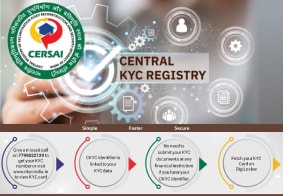CKYC Registry
-
Customer Service Contact us Service request Locate a branch
Find all the help you need
Scan the QR, get our app, and find help on your fingertips

Help CenterSupport topics, Contact us, FAQs and more
-
Login
Are you ready for an upgrade?
Login to the new experience with best features and services
-
Login
Are you ready for an upgrade?
Login to the new experience with best features and services
- Accounts
-
Deposits
IDFC FIRST Bank Deposits
View all Deposits -
Loans
IDFC FIRST Bank Loans
View all Loans - Wealth & Insure
-
Payments
IDFC FIRST Bank Payments
View all Payments -
Cards
IDFC FIRST Bank Cards
View all Cards - Blogs
- Corporate Account
-
Cash Management Services
IDFC FIRST Bank Cash Management Services
View all Cash Management Services - Supply Chain Finance
-
Corporate Lending
IDFC FIRST Bank Lending
View all -
Treasury
IDFC FIRST Bank Treasury
See more details - NBFC Financing
Support topics, Contact us, FAQs and more
- IDFC FIRST Bank Accounts
-
Savings Account
-
Corporate Salary
Account -
Senior Citizens
Savings Account -
First Power
Account -
Current Account
-
NRI Savings
Account -
TASC Institutional
Account -
Savings Account
Interest Calculator
- IDFC FIRST Bank Deposits
-
Fixed Deposit
-
Recurring Deposit
-
NRI Fixed Deposit
-
Safe Deposit Locker
-
FD Calculator
-
RD Calculator
- IDFC FIRST Bank Loans
-
Personal Loan
-
Consumer Durable
Loan -
Home Loan
-
Business Loan
-
Professional Loan
-
Education Loan
-
New Car Loan
-
Pre-owned Car Loan
-
Two Wheeler Loan
-
Pre-owned Two
Wheeler Loan -
Commercial Vehicle
Loan -
Gold Loan
-
Loan Against Property
-
Loan Against Securities
-
Easy Buy EMI card
-
Personal Loan
EMI Calculator -
Education Loan
EMI Calculator -
Home Loan
EMI Calculator
- IDFC FIRST Bank Wealth & Insure
-
FIRST Select
-
FIRST Wealth
-
FIRST Private
-
Mutual Funds
-
Sovereign Gold Bond
-
Demat Account
-
Term Insurance
-
Life Insurance
-
Health Insurance
-
General Insurance
-
Bonds
-
Loan Against
Securities -
Portfolio Management
Service
- IDFC FIRST Bank Payments
-
FASTag
-
Credit Card
Bill Payments -
UPI
-
Funds Transfer
-
Forex Services
-
Pay Loan EMI
- IDFC FIRST Bank Cards
-
Ashva :
Metal Credit Card -
Mayura :
Metal Credit Card -
FIRST Millennia
Credit Card -
FIRST Classic
Credit Card -
FIRST Select
Credit Card -
FIRST Wealth
Credit Card -
FIRST WOW!
Credit Card -
Deals
-
Debit Cards
-
Co-branded Cards
-
Credit Card
EMI Calculator -
FIRST Corporate
Credit Card -
FIRST Purchase
Credit Card -
FIRST Business
Credit Card
- Premium Metal Credit Cards
-
AshvaLifestyle1% Forex₹2,999
-
MayuraLifestyleZero Forex₹5,999
-
FIRST PrivateInvite Only
- Best for travellers
-
MayuraZero ForexMetal₹5,999
-
Ashva1% ForexMetal₹2,999
-
FIRST WOW!Zero ForexTravelLifetime Free
-
FIRST SWYPTravel OffersEMI₹499
-
FIRST Select1.99% ForexLifestyleLifetime Free
-
FIRST Wealth1.5% ForexLifestyleLifetime Free
-
Club VistaraTravelLifestyle₹4,999
-
IndiGo IDFC FIRST Dual Credit CardTravelLifestyle₹4,999
- Max benefits, Free for life
-
FIRST Classic10X RewardsShoppingNever Expiring Rewards
-
FIRST Millennia10X RewardsShoppingNever Expiring Rewards
-
FIRST Select10X RewardsLifestyle1.99% Forex
-
FIRST Wealth10X RewardsLifestyle1.5% Forex
-
FIRST WOW!RewardsTravelZero Forex
-
LIC ClassicRewardsInsuranceShopping
-
LIC SelectRewardsInsuranceShopping
- Reward Multipliers
-
AshvaLifestyleMetal₹2,999
-
MayuraLifestyleZero Forex₹5,999
-
FIRST ClassicNever Expiring RewardsShoppingLifetime Free
-
FIRST MillenniaNever Expiring RewardsShoppingLifetime Free
-
FIRST SelectNever Expiring RewardsLifestyleLifetime Free
-
FIRST WealthNever Expiring RewardsLifestyleLifetime Free
- Rewards & Credit on UPI
-
FIRST Power+FuelUPI₹499
-
FIRST PowerFuelUPI₹199
-
FIRST EA₹NVirtual1% Cashback₹499
-
FIRST DigitalVirtualUPI₹199
-
IndiGo IDFC FIRST Dual Credit CardUPITravelDual cards
- Fuel and Savings
-
FIRST PowerRewardsUPI₹199
-
FIRST Power+RewardsUPI₹499
-
LIC ClassicRewardsInsuranceShopping
-
LIC SelectRewardsInsuranceShopping
- Express and Flaunt
-
AshvaMetal1% Forex₹2,999
-
MayuraMetalZero Forex₹5,999
-
FIRST SWYPEMIOfferMAX₹499
-
FIRST MillenniaRewardsShoppingLifetime Free
- FD Backed rewarding Credit Cards for all
-
FIRST EA₹NVirtualCashback₹499
-
FIRST WOW!Zero ForexTravelLifetime Free
-
CreditPro Balance TransferTransfer & SaveReduce InterestPay Smartly
- IDFC FIRST Bank NRI Forex Solutions
-
Send money to India-Wire transfer
-
Send money to India-Digitally
-
Send money abroad
-
Max Returns FD (INR)
- IDFC FIRST Bank MSME Accounts
-
Platinum Current
Account -
Gold
Current Account -
Silver Plus
Current Account -
Merchant Multiplier
Account -
Agri Multiplier
Account -
TASC Institutional
Account -
Dynamic Current
Account -
World business
Account -
First Startup
Current Account
- IDFC FIRST Bank Business Loans
-
Business Loan
-
Professional Loan
-
Loan Against Property
-
Business Loan for Women
-
Working Capital Loan
-
Construction Equipment Loan
-
Machinery Loan
-
Healthcare Equipment Loan
- IDFC FIRST Bank Business Solutions
-
Payment Solutions
-
Tax Payments
-
Doorstep Banking
-
Point of Sale (POS)
-
Escrow Accounts
-
NACH
-
Payment Gateway
-
UPI
-
Virtual Accounts
-
As per amendment in the Income Tax Rules, PAN or Aadhaar are to be mandatorily quoted for cash deposit or withdrawal aggregating to Rupees twenty lakhs or more in a FY. Please update your PAN or Aadhaar. Kindly reach out to the Bank’s contact center on 1800 10 888 or visit the nearest IDFC FIRST Bank branch for further queries.
-
-
Most Searched
Sorry!
We couldn’t find ‘’ in our website
Here is what you can do :
- Try checking the spelling and search
- Search from below suggestions instead
- Widen your search & try a more generic keyword
Suggested
Get a Credit Card
Enjoy Zero Charges on All Commonly Used Savings Account Services
Open Account Now
Savings Account
How to get more interest in a savings account? Follow these tips!
Key Takeaways
You can boost your savings account interest by finding higher rates online, taking advantage of sweep deposits, and earning directly through regular interest credits.
To learn how to get more interest in a savings account, you should also understand how savings account interest rates work, their compounding frequencies, and how they can hedge against inflation.
IDFC FIRST Bank can help you earn more interest with its competitive interest rates, with monthly interest credits and zero-fee banking.
Like many of us, Raavi had parked her money in a savings bank account. However, the interest earned barely kept up with inflation. She wanted to make her money work harder without taking on unnecessary risks.
Wouldn’t it be great if you also knew how to get more interest in a savings account without sacrificing safety or liquidity? Well, it’s possible! Let's explore some simple strategies that can help you boost your savings account returns.
READ MORE
Tips on how to get more interest in a savings account
To increase the income from your savings account, consider the following tips –
1. Find a higher rate of interest online
Not satisfied with the interest offered by traditional savings bank accounts? Many online banking platforms and financial institutions provide a decent rate of interest. If you find a credible bank or financial institution offering a higher interest rate, consider moving your funds there to earn extra interest. But ensure that the maintenance or other additional charges don’t wipe off any savings you make! Explore online for better returns.
2. Utilise your funds effectively with sweep deposits
You can use your savings bank account's sweep-in and sweep-out facility to generate higher interest income from your idle funds. Under this auto-sweep facility, your surplus funds are swept out to a fixed deposit income that automatically yields a higher rate of return. You can sweep the money back into your savings account if you need some urgent cash. The bank also does the same when the money in your regular savings account runs low.
3. Earn directly through regular interest credits
Your banker may provide your savings account with annual, quarterly, or monthly interest credits. If you consider a bank with a frequent interest credit option, you can earn more on your savings account balance. This is because savings accounts use the compound interest rate structure, which works in your favour.
Here, the interest you earn is based not just on deposited principal but on interest collected in earlier periods. Over time, this compounding effect—earning interest on interest—increases your savings interest income.
IDFC FIRST Bank Savings Account provides higher interest up to 7.00% p.a., which is deposited into your bank account monthly.
4. Consider other low-risk investments
If you maintain a decent balance on your savings account, your monthly interest credit can be used for other investment purposes. For instance, you can open a SIP and deposit the monthly interest income. This will ensure that your interest income is used to earn a higher return through actively managed fund schemes.
Key features of savings account interest rates
To learn how to get more interest in a savings account and reap maximum benefits, you must understand the characteristics of savings account interest rates.
1. Savings account interest rates are variable
Banks offer different interest rates based on the account balance you maintain. You can maintain a balance that provides the highest returns.
2. Interest compounding frequency
The frequency at which interest is deposited in the account can vary among banks. Some banks deposit interest quarterly, while others may do so monthly. The more frequently interest is deposited, the higher the overall returns for the account holder.
3. Savings account interest rates help customers hedge against Inflation
Savings account interest rates safeguard funds against inflation. While interest rates provide returns, if they do not outpace inflation, the actual value of the money may go down over time. Account holders should consider this to ensure their savings retain their purchasing power.
The bottom line
By following these strategies, you can know how to get more interest in a savings account and enhance returns without compromising on safety or liquidity. By being proactive and informed, you can make the most of your savings and achieve your financial goals more efficiently.
Open a savings account with IDFC FIRST Bank today and earn higher interest on your savings. Experience the benefits of zero-fee banking, competitive returns, hassle-free online banking, and much more!
Frequently asked questions
How do you get paid interest on a savings account?
You can receive interest either monthly or quarterly with the savings account interest rate on the daily balance.
How do I get my savings account interest tax?
The income tax department does not tax the interest earned up to ₹10,000 through savings accounts under Section 80TTA of the Income Tax Act.
Do banks pay interest monthly?
Yes, banks like IDFC FIRST Bank pay interest monthly.
Do banks charge for savings accounts?
Banks charge customers for maintaining certain services in their savings accounts. IDFC FIRST Bank’s ‘zero-fee banking' promise helps customers avoid these charges.
Does the account number change when I transfer from my home branch to another branch?
No, the bank account number does not change if you transfer your account to another branch from your home branch. You can continue using debit cards, chequebooks and other bank account services without hassle or interruption.
How much interest can I expect on a savings account with a balance?
The interest income on savings accounts depends on the savings account interest rate, your balance, and the frequency of interest credit.
What is a regular savings account?
A regular savings account is a primary type of bank account that offers safety and liquidity for your funds. You can use it for everyday transactions and savings.
How to get more interest in a savings account?
Consider opening a high-yield savings account, utilising auto sweep facilities, and maximising monthly interest credits to earn higher interest.
*IDFC FIRST Bank offers zero-fee banking on Savings Accounts, subject to maintenance of the required Average Monthly Balance in the account. Such services are provided free in good faith, and in the scenario of any abuse, the bank reserves the full right to levy fees according to market standards. All rights reserved.
Disclaimer
The contents of this article/infographic/picture/video are meant solely for information purposes. The contents are generic in nature and for informational purposes only. It is not a substitute for specific advice in your own circumstances. The information is subject to updation, completion, revision, verification and amendment and the same may change materially. The information is not intended for distribution or use by any person in any jurisdiction where such distribution or use would be contrary to law or regulation or would subject IDFC FIRST Bank or its affiliates to any licensing or registration requirements. IDFC FIRST Bank shall not be responsible for any direct/indirect loss or liability incurred by the reader for taking any financial decisions based on the contents and information mentioned. Please consult your financial advisor before making any financial decision.
The features, benefits and offers mentioned in the article are applicable as on the day of publication of this blog and is subject to change without notice. The contents herein are also subject to other product specific terms and conditions and any third party terms and conditions, as applicable. Please refer our website www.idfcfirstbank.com for latest updates.























